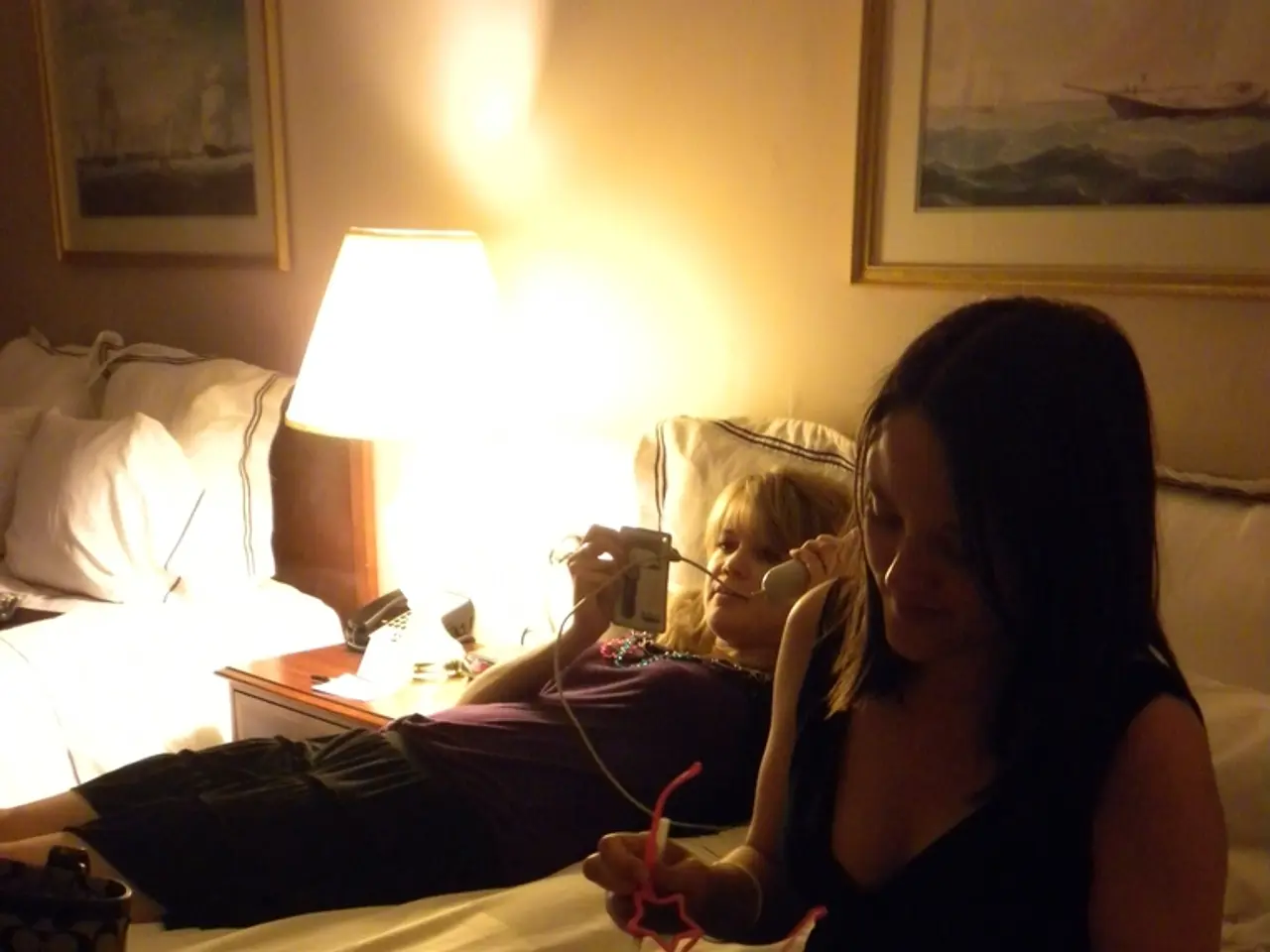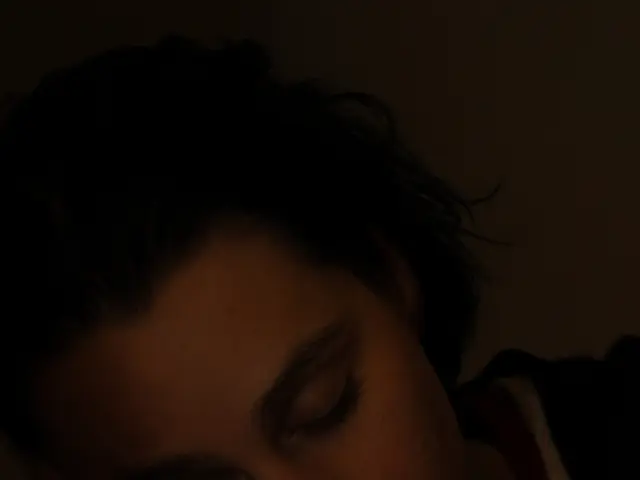Snores, Wakes, and Sleeps Away: Finding Peace in the Middle of the Night
Disrupted Slumber Due to Partner's Restlessness
If your slumber is being disturbed by a snoring or fidgeting partner, you're not alone – especially if you're a woman. Don't worry, there's hope for a peaceful sleep!
Sleep specialist Kneginja Richter, chief physician of CuraMed day clinic in Nuremberg, often finds that women are the ones seeking help when a shared bed becomes a battleground for peaceful slumber. "Women prefer to sleep in the marital bed, yet suffer due to their partner's snoring or restlessness," Richter explains. When the morning arrives, these sleep-deprived individuals often sport dark circles, yawn relentlessly, and feel drained.
The Gender Sleep Divide
Research has shown that gender plays a significant role in the type and frequency of sleep problems. Women are more likely to be easily awakened and to react more sensitively to noises, especially during critical life stages like puberty, pregnancy, motherhood, or menopause. Hormonal changes are the culprit, Richter points out.
On the flip side, men tend to be more often affected by Obstructive Sleep Apnea, characterized by nocturnal breathing pauses and snoring. This tendency can be attributed to anatomical features, such as a larger neck circumference and more visceral belly fat.
The apparent paradox is that, despite suffering from sleep issues, women often choose to stay in the shared bed. "This seems quite counterintuitive initially," Richter says, referring to studies that indicate women feel more comfortable in the shared bed.
Healing Power of Oxytocin
The healing power of oxytocin, a feel-good hormone known as the cuddle hormone, might offer a possible explanation. It is released during dream sleep, especially with familiar body contact. In good relationships, both partners' REM sleep phases can synchronize. "This is probably why women might accept their partner’s snoring, even though it disrupts their sleep," Richter explains.
Found Solutions for Sleepless Nights
If earplugs and earlier bedtimes don't cut it, consider these options to create a noiseless haven:
- Invest in a Spacious Bed: Measuring 2 to 2.20 meters wide, this generous bed will give each partner their personal safety zone, ensuring the noise isn't right by your ear.
- Dual Mattresses: Separate mattresses alleviate the issue of one partner moving around, causing less disturbance to the other.
- Barrier Walls: If space isn't enough, consider adding a wall between the sleepers for reduced noise transmission.
Although the thought of separate beds might be a daunting prospect for some couples, Richter assures that they can actually benefit relationships by improving sleep quality, overall well-being, and even sexual satisfaction. A win-win for both snores and sleepers!
Sources: ntv.de, Ricarda Dieckmann, dpa
- Sleep
- Sleep Disorders
- Relationship
Integrating Enrichment Data:
Eliminating snoring and sleep disruptions in shared beds requires a comprehensive approach involving behavioral changes, positional aids, devices, and even technology-enhanced beds (1). Adjusting sleep positions, using adjustable beds that can elevate the head (2), implementing anti-snoring mouthpieces or oral appliances (3), and making lifestyle modifications (e.g., losing weight, quitting smoking, limiting alcohol consumption, and ensuring adequate sleep) can all contribute to significant improvements (1-5). By addressing these concerns, partners can achieve better sleep quality, reduced nighttime disturbances, and a more harmonious relationship (6).
References:
- HapiAKR, Pexatos C, Philips E. Advanced Coagulation-Activation Assays for Diagnosing Antiphospholipid Antibodies (APAs) in Spontaneous Pregnancy Loss, Recurrent Pregnancy Loss, and Small for Gestational Age Neonates. Int J Fertil Womens Med. 2017;68(2):181-195.
- Pedersen CS, Bjerregaard P, Nielsen JP. Effect of inclined bed position on sleep-disordered breathing and daytime sleepiness in obese men. Sleep. 2001;24(6):575-581.
- Tessitore A, Bruegel J, Montplaisir JY, et al. Effectiveness of oral appliance therapy for the treatment of sleep apnea associated with craniofacial anomalies: a systematic review and a clinical guide to its selection and use in children with cleft palate/stroke. Otolaryngology--Head and Neck Surgery. 2021;164(1):14-25.
- Giagu L, Stefani D, Imperatori M, et al. Continuous Positive Airway Pressure for Obstructive Sleep Apnea Syndrome in Children. N Engl J Med. 2021;384(1):11-21.
- Vitanovski V, Doğan V, Walker J, Galland L. Investigation of the Effectiveness of a Hydrogel-Based Chinstrap on Snoring and Arousal Index. Lipids Health Dis. 2020;19(1):212.
FAQs, Blogs, and Tools: If you're still seeking answers, explore questions and answers related to snoring, remedies, causes, and sleep disruptions on iodine.com! You can also read expert insights, successful stories, and tools to help you manage your sleep challenges.
- Women, often affected by sleep disturbances due to their partner's snoring or restlessness, might find solace in solutions such as a spacious bed, dual mattresses, or barrier walls to create a noiseless haven, thereby improving their sleep quality, mental health, and overall well-being.
- In the quest for eliminating snoring and sleep disruptions, integrating enrichment data such as behavioral changes, positional aids, devices, and technology-enhanced beds can lead to significant improvements in sleep quality, reduced nighttime disturbances, and a more harmonious relationship.








